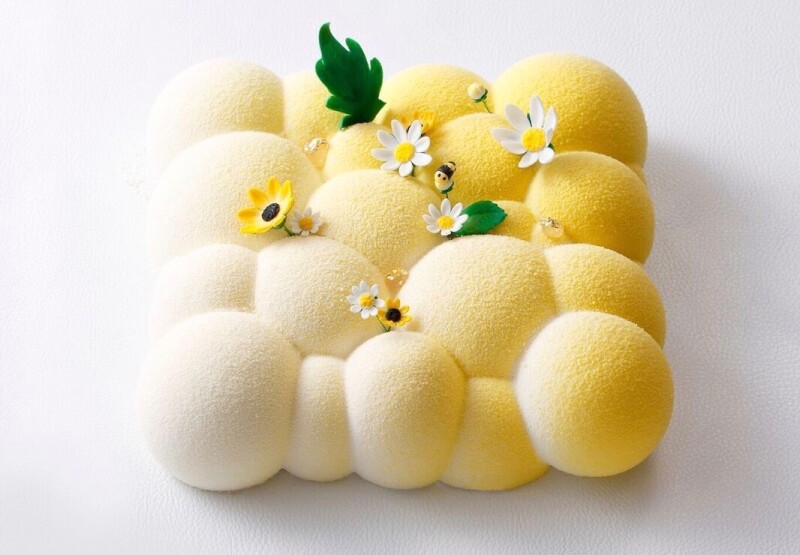In Hong Kong, a new pastry shop is revolutionizing Chinese dessert.
At the center of it all is chef Vicky Lau, a Hong Kong native who trained at Le Cordon Bleu and spent several years in New York City. She returned to Hong Kong nearly a decade ago and opened the Michelin-starred Tate Dining Room & Bar in 2012. Now, in her new Poem patisserie, Lau is fusing her dichotomous culinary backgrounds into a style that’s entirely new for the city.
In preparation to launch Poem, which opened in July and immediately gained a cult following, Lau spent time exploring Electric Road in Tin Hau, a neighborhood known for its high concentration of dessert cafés. Two things became apparent. First, Lau realized that Cantonese desserts tend to be less sweet than European desserts. Second—and more importantly—Lau saw room for improvement.
She wanted to take the flavors of those traditional desserts, like tong sui (a sweet, custard-like dish) and egg custard tarts, and recreate them using classic French techniques, with a heavy emphasis on the visual.
For that very reason, it’s easy to spot her shop. Simply walk down Hollywood Road in Central until you come to a window display featuring Lau’s confections playfully suspended in mid-air. True to her mission, the cakes here are unlike anything else you’ll find in the city. Her signature Shan Shui cake was inspired by traditional Chinese watercolor paintings—to decorate it, she slides a spatula against the candy shell glaze, resulting in a swirl of color that’s both controlled and a little psychedelic.
But the cakes aren’t merely decorative—the flavors are also mind-blowing. Think oolong mousse paired with tangy kumquat or white chocolate mixed with coconut and pandan. Upstairs at Tate, a tearoom-esque restaurant with an expanded menu of both savory and sweet masterpieces, she serves a honey-themed dessert concealed inside a custom-built wooden beehive. When the dish is brought to your table, a small hidden speaker hums with the sound of buzzing bees.
It’s all part of Lau’s unique vision—everything from the futuristic, Zen-like decor to the arresting desserts is intentional. “It’s not just the food, but the service, the look when you walk in,” she says. “You really feel a lot of passion when you dine here.”
Read on for a visual tour of her sweetest accomplishments.

Photo courtesy of Poem Patisserie
Ode to Bees: Presented in an eye-catching wooden beehive, this multifaceted dessert pays homage to the use of natural sweeteners in traditional Chinese dessert—like honey, which in this case is sourced from a farm that’s located 10 miles from central Hong Kong.

Photo courtesy of Poem Patisserie
Red Date Cake: While chocolate seldom makes an appearance in traditional Chinese desserts, this tempting number pairs dark chocolate with red date and aged Mandarin peel ganache.

Photo courtesy of Poem Patisserie
Petit Gateau: If there’s one Hong Kong dessert that’s known to foreigners, it’s egg custard, a small pastry tart seen in bakery shop windows all over the city. This version (pictured here, bottom right, along with chai masala-infused chocolate mousse; iced coconut; and Hong Kong-style waffle) is paired with chestnut, another staple in tong sui sweet soups.

Photo courtesy of Poem Patisserie
Urban Bee Farm: Using the same locally sourced honey, this mousse-sponge hybrid makes use of snow chrysanthemum, an herbal tea that often accompanies dessert in Hong Kong.

Photo courtesy of Poem Patisserie
Shan Shui: A sponge cake that’s infused with Tie guan yin oolong tea mousse, and topped with a sugar fondant flower, the high-art Shan Shui reflects locals’ love of delicate tea flavors and floral motifs.

Photo courtesy of Poem Patisserie
Yangzhi Nectar: This geometrically pleasing dish comes in a white chocolate box containing sago, a kind of squishy pearl-like starch that’s featured in most Hong Kong-style puddings.










